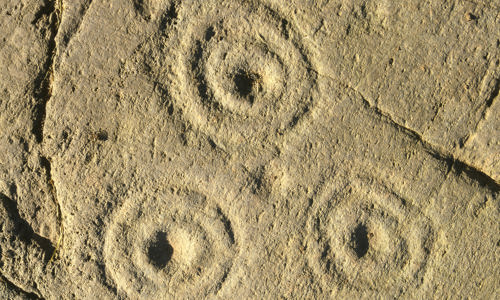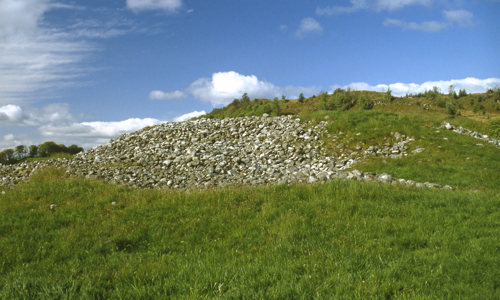History
A linear cemetery
Ri Cruin is part of the 'linear cemetery': a 2km line of burial cairns, running north to south in Kilmartin Glen. All five are large, round cairns dating to the late Neolithic and Bronze Age periods – about 5,000 to 3,500 years ago.
The linear cemetery is part of an extensive archaeological landscape in Kilmartin Glen, and is associated with other ritual monuments such as Temple Wood.
Grave disturbances
In the 1700s and 1800s, the layer of peat that covered Kilmartin Glen was removed for fuel, revealing the area’s cairns and ancient monuments. Ri Cruin was damaged during agricultural improvements, and in the 1700s a lime kiln was built into the cairn, damaging one of the cists.
During these works three stone-lined cists were discovered, dating Ri Cruin’s construction to about 4,000 years ago, during the Bronze Age.
Excavations in 1870 found three cists, all empty, apart from a small amount of cremated bone in the northernmost cist. Grave goods were probably removed during agricultural works earlier in the 1800s.
Axe carvings were found in the southernmost cist. These are rare, but a distinctive feature of the Kilmartin Glen cairns – they’re also found in Nether Largie North and Mid cairns. They suggest that people of high status were buried here: bronze flat-axes were associated with wealth.
A prehistoric landscape
A rich prehistoric landscape survives in Kilmartin Glen, providing a tantalising insight into its prehistoric population. The surviving rock art along the glen is remarkable for the number of elaborately carved outcrops, the style of and extent of the carvings, and their close association with other prehistoric monuments. No other place in Scotland has such a concentration of prehistoric carved stone surfaces, and Neolithic and Bronze Age monuments.
Other carved rock outcrops around Kilmartin Glen include:
Other monuments include:
- Dunadd Hill Fort
- Dunchraigaig Cairn
- Glebe Cairn
- Nether Largie North Cairn
- Nether Largie Mid Cairn
- Nether Largie South Cairn
- Temple Wood Stone Circle
The glen is also home to an important collection of medieval sculptured stones.









